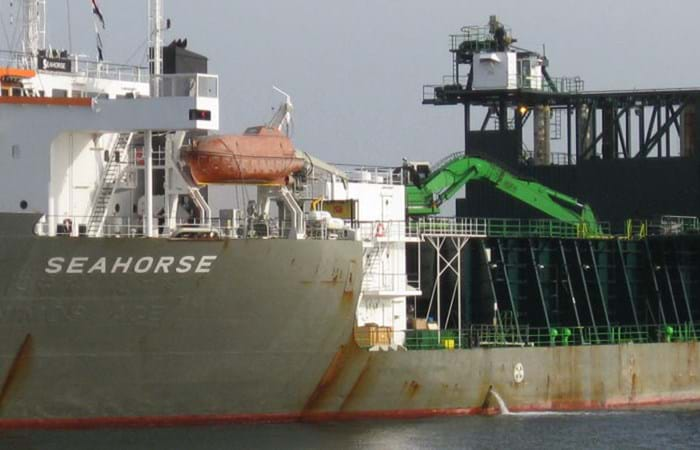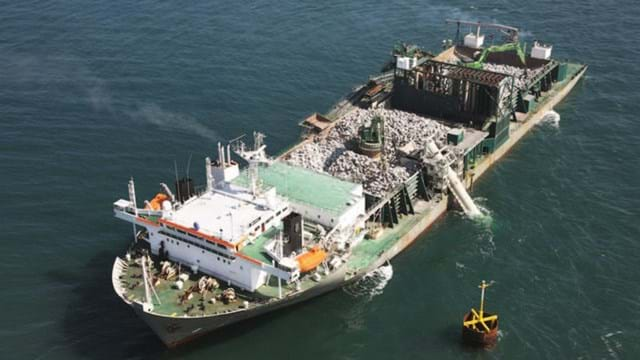The existing live 28" East Java Gas Pipeline runs offshore from the Kangean Block, close to Pagerungan Besar Island, Kangean Islands, Indonesia, through the Madura Strait and onshore via Porong to Surabaya, Indonesia’s second largest city.
During a survey campaign in 2006 initiated by the owners of the East Java Gas Pipeline, PT. Pertamina Gas and PT. Trans Javagas Pipeline, a large number of critical spans were identified, many of which above the threshold for vortex induced vibrations. Boskalis Offshore, through its Indonesian entity PT. Boskalis International Indonesia, was contracted to rectify 799 critical spans by means of installing a total of 804 rock berms. These berms reduce span lengths and prevent that the critical span length will be exceeded within the remaining lifetime of the pipeline.
Support Berm Installation
For the support berm installation works Boskalis deployed its dynamically positioned fallpipe vessel (DPFV) Seahorse. This vessel, with a carrying capacity of 18,000 tons of rock, is able to position its fallpipe directly above the live pipeline, meanwhile ensuring sufficient vertical clearance to compensate for current and swell. The DP Class II capabilities of the vessel allow for accurate dumping with a minimum of losses resulting in a short project execution time. One load of 1-5' rock was brought from Norway and additional loads were loaded in Indonesia. Rock was supplied by a quarry operating in the inlands of East Java, delivering rock via the road to a temporary stockpile at the port of Paiton. During loading the 1-5' rock was transported by truck from the temporary stockpile to the feeder and via a conveyor belt into the holds of the DPFV Seahorse. The entire temporary supply chain for rock supply, from quarry to Seahorse, was purposely set up for the execution of this project. Prior to commencement of the rock dumping operations, a pre-survey was carried out by Seahorse's ROV, equipped with multibeam echosounders. This survey was used to identify the start and end points of the free spans. Subsequently, the design per span location was prepared and the berms were installed. A post-survey was carried out to ensure that the berms were installed as specified. When the results of the post-survey were satisfactory, the vessel moved to the next position.

